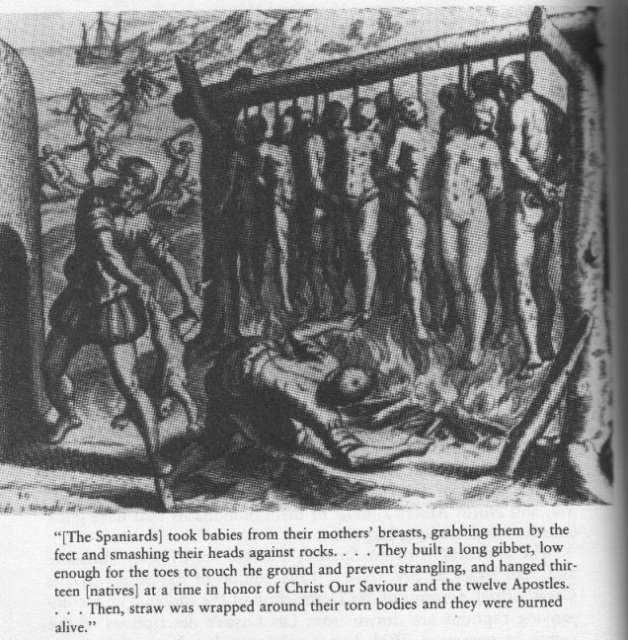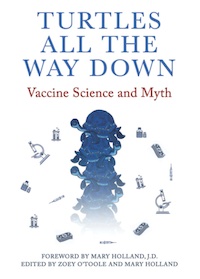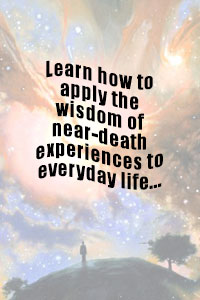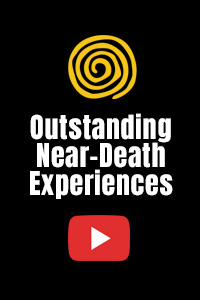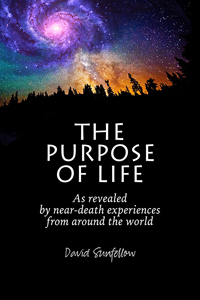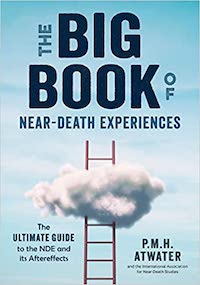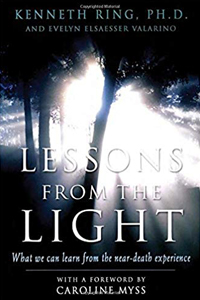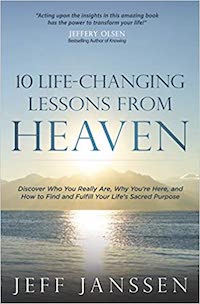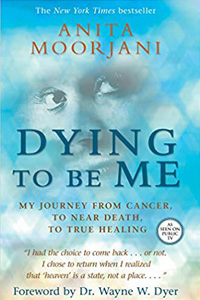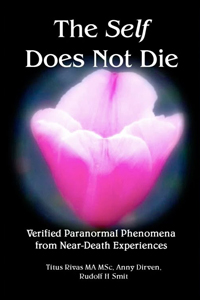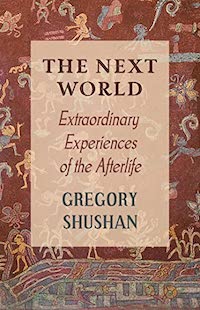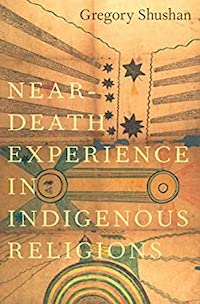European Colonizers Killed So Many Native Americans That It Changed The Global Climate, Researchers Say
By Lauren Kent
CNN
February 1, 2019
When Europeans arrived in the Americas, they caused so much death and disease that it changed the global climate, a new study finds.
European settlers killed 56 million indigenous people over about 100 years in South, Central and North America, causing large swaths of farmland to be abandoned and reforested, researchers at University College London, or UCL, estimate. The increase in trees and vegetation across an area the size of France resulted in a massive decrease in carbon dioxide (CO2) in the atmosphere, according to the study.
Carbon levels changed enough to cool the Earth by 1610, researchers found. Columbus arrived in 1492, “CO2 and climate had been relatively stable until this point,” said UCL Geography Professor Mark Maslin, one of the study’s co-authors. “So, this is the first major change we see in the Earth’s greenhouse gases.”
Before this study, some scientists had argued the temperature change in the 1600s, called the Little Ice Age, was caused only by natural forces. But by combining archaeological evidence, historical data and analysis of carbon found in Antarctic ice, the UCL researchers showed how the reforestation — directly caused by the Europeans’ arrival — was a key component of the global chill, they said.
“For once, we’ve been able to balance all the boxes and realize that the only way the Little Ice Age was so intense is … because of the genocide of millions of people,” Maslin told CNN.
Researchers analyzed Antarctic ice, which traps atmospheric gas and can reveal how much carbon dioxide was in the atmosphere centuries ago. “The ice cores showed that there was a larger dip in CO2 (than usual) in 1610, which was caused by the land and not the oceans,” said Alexander Koch, lead author of the study.
A small shift in temperatures — about a 10th of a degree in the 17th century — led to colder winters, frosty summers and failing harvests, Koch said.
The implications of the study go beyond climate science and also contribute to research in geography and history, Maslin said, noting that deaths of indigenous Americans directly contributed to the success of the European economy.
Natural resources and food shipped from the New World helped Europe’s population to expand. It also allowed people to stop farming for sustenance and begin working in other industries for spare money.
“The really weird thing is, the depopulation of the Americas may have inadvertently allowed the Europeans to dominate the world,” Maslin said. “It also allowed for the Industrial Revolution and for Europeans to continue that domination.”
…………
…………
Brief Account of the Devastation of the Indies
By Bartoleme de Las Casas
Written in 1541
History Is A Weapon
The Indies were discovered in the year one thousand four hundred and ninety-two. In the following year a great many Spaniards went there with the intention of settling the land. Thus, forty-nine years have passed since the first settlers penetrated the land, the first so claimed being the large and most happy isle called Hispaniola, which is six hundred leagues in circumference. Around it in all directions are many other islands, some very big, others very small, and all of them were, as we saw with our own eyes, densely populated with native peoples called Indians. This large island was perhaps the most densely populated place in the world. There must be close to two hundred leagues of land on this island, and the seacoast has been explored for more than ten thousand leagues, and each day more of it is being explored. And all the land so far discovered is a beehive of people; it is as though God had crowded into these lands the great majority of mankind.
And of all the infinite universe of humanity, these people are the most guileless, the most devoid of wickedness and duplicity, the most obedient and faithful to their native masters and to the Spanish Christians whom they serve. They are by nature the most humble, patient, and peaceable, holding no grudges, free from embroilments, neither excitable nor quarrelsome. These people are the most devoid of rancors, hatreds, or desire for vengeance of any people in the world. And because they are so weak and complaisant, they are less able to endure heavy labor and soon die of no matter what malady. The sons of nobles among us, brought up in the enjoyments of life’s refinements, are no more delicate than are these Indians, even those among them who are of the lowest rank of laborers. They are also poor people, for they not only possess little but have no desire to possess worldly goods. For this reason they are not arrogant, embittered, or greedy. Their repasts are such that the food of the holy fathers in the desert can scarcely be more parsimonious, scanty, and poor. As to their dress, they are generally naked, with only their pudenda covered somewhat. And when they cover their shoulders it is with a square cloth no more than two varas in size. They have no beds, but sleep on a kind of matting or else in a kind of suspended net called bamacas. They are very clean in their persons, with alert, intelligent minds, docile and open to doctrine, very apt to receive our holy Catholic faith, to be endowed with virtuous customs, and to behave in a godly fashion. And once they begin to hear the tidings of the Faith, they are so insistent on knowing more and on taking the sacraments of the Church and on observing the divine cult that, truly, the missionaries who are here need to be endowed by God with great patience in order to cope with such eagerness. Some of the secular Spaniards who have been here for many years say that the goodness of the Indians is undeniable and that if this gifted people could be brought to know the one true God they would be the most fortunate people in the world.
Yet into this sheepfold, into this land of meek outcasts there came some Spaniards who immediately behaved like ravening wild beasts, wolves, tigers, or lions that had been starved for many days. And Spaniards have behaved in no other way during the past forty years, down to the present time, for they are still acting like ravening beasts, killing, terrorizing, afflicting, torturing, and destroying the native peoples, doing all this with the strangest and most varied new methods of cruelty, never seen or heard of before, and to such a degree that this Island of Hispaniola once so populous (having a population that I estimated to be more than three million), has now a population of barely two hundred persons.
The island of Cuba is nearly as long as the distance between Valladolid and Rome; it is now almost completely depopulated. San Juan [Puerto Rico] and Jamaica are two of the largest, most productive and attractive islands; both are now deserted and devastated. On the northern side of Cuba and Hispaniola he the neighboring Lucayos comprising more than sixty islands including those called Gigantes, beside numerous other islands, some small some large. The least felicitous of them were more fertile and beautiful than the gardens of the King of Seville. They have the healthiest lands in the world, where lived more than five hundred thousand souls; they are now deserted, inhabited by not a single living creature. All the people were slain or died after being taken into captivity and brought to the Island of Hispaniola to be sold as slaves. When the Spaniards saw that some of these had escaped, they sent a ship to find them, and it voyaged for three years among the islands searching for those who had escaped being slaughtered , for a good Christian had helped them escape, taking pity on them and had won them over to Christ; of these there were eleven persons and these I saw.
More than thirty other islands in the vicinity of San Juan are for the most part and for the same reason depopulated, and the land laid waste. On these islands I estimate there are 2,100 leagues of land that have been ruined and depopulated, empty of people.
As for the vast mainland, which is ten times larger than all Spain, even including Aragon and Portugal, containing more land than the distance between Seville and Jerusalem, or more than two thousand leagues, we are sure that our Spaniards, with their cruel and abominable acts, have devastated the land and exterminated the rational people who fully inhabited it. We can estimate very surely and truthfully that in the forty years that have passed, with the infernal actions of the Christians, there have been unjustly slain more than twelve million men, women, and children. In truth, I believe without trying to deceive myself that the number of the slain is more like fifteen million.
The common ways mainly employed by the Spaniards who call themselves Christian and who have gone there to extirpate those pitiful nations and wipe them off the earth is by unjustly waging cruel and bloody wars. Then, when they have slain all those who fought for their lives or to escape the tortures they would have to endure, that is to say, when they have slain all the native rulers and young men (since the Spaniards usually spare only the women and children, who are subjected to the hardest and bitterest servitude ever suffered by man or beast), they enslave any survivors. With these infernal methods of tyranny they debase and weaken countless numbers of those pitiful Indian nations.
Their reason for killing and destroying such an infinite number of souls is that the Christians have an ultimate aim, which is to acquire gold, and to swell themselves with riches in a very brief time and thus rise to a high estate disproportionate to their merits. It should be kept in mind that their insatiable greed and ambition, the greatest ever seen in the world, is the cause of their villainies. And also, those lands are so rich and felicitous, the native peoples so meek and patient, so easy to subject, that our Spaniards have no more consideration for them than beasts. And I say this from my own knowledge of the acts I witnessed. But I should not say “than beasts” for, thanks be to God, they have treated beasts with some respect; I should say instead like excrement on the public squares. And thus they have deprived the Indians of their lives and souls, for the millions I mentioned have died without the Faith and without the benefit of the sacraments. This is a wellknown and proven fact which even the tyrant Governors, themselves killers, know and admit. And never have the Indians in all the Indies committed any act against the Spanish Christians, until those Christians have first and many times committed countless cruel aggressions against them or against neighboring nations. For in the beginning the Indians regarded the Spaniards as angels from Heaven. Only after the Spaniards had used violence against them, killing, robbing, torturing, did the Indians ever rise up against them….
On the Island Hispaniola was where the Spaniards first landed, as I have said. Here those Christians perpetrated their first ravages and oppressions against the native peoples. This was the first land in the New World to be destroyed and depopulated by the Christians, and here they began their subjection of the women and children, taking them away from the Indians to use them and ill use them, eating the food they provided with their sweat and toil. The Spaniards did not content themselves with what the Indians gave them of their own free will, according to their ability, which was always too little to satisfy enormous appetites, for a Christian eats and consumes in one day an amount of food that would suffice to feed three houses inhabited by ten Indians for one month. And they committed other acts of force and violence and oppression which made the Indians realize that these men had not come from Heaven. And some of the Indians concealed their foods while others concealed their wives and children and still others fled to the mountains to avoid the terrible transactions of the Christians.
And the Christians attacked them with buffets and beatings, until finally they laid hands on the nobles of the villages. Then they behaved with such temerity and shamelessness that the most powerful ruler of the islands had to see his own wife raped by a Christian officer.
From that time onward the Indians began to seek ways to throw the Christians out of their lands. They took up arms, but their weapons were very weak and of little service in offense and still less in defense. (Because of this, the wars of the Indians against each other are little more than games played by children.) And the Christians, with their horses and swords and pikes began to carry out massacres and strange cruelties against them. They attacked the towns and spared neither the children nor the aged nor pregnant women nor women in childbed, not only stabbing them and dismembering them but cutting them to pieces as if dealing with sheep in the slaughter house. They laid bets as to who, with one stroke of the sword, could split a man in two or could cut off his head or spill out his entrails with a single stroke of the pike. They took infants from their mothers’ breasts, snatching them by the legs and pitching them headfirst against the crags or snatched them by the arms and threw them into the rivers, roaring with laughter and saying as the babies fell into the water, “Boil there, you offspring of the devil!” Other infants they put to the sword along with their mothers and anyone else who happened to be nearby. They made some low wide gallows on which the hanged victim’s feet almost touched the ground, stringing up their victims in lots of thirteen, in memory of Our Redeemer and His twelve Apostles, then set burning wood at their feet and thus burned them alive. To others they attached straw or wrapped their whole bodies in straw and set them afire. With still others, all those they wanted to capture alive, they cut off their hands and hung them round the victim’s neck, saying, “Go now, carry the message,” meaning, Take the news to the Indians who have fled to the mountains. They usually dealt with the chieftains and nobles in the following way: they made a grid of rods which they placed on forked sticks, then lashed the victims to the grid and lighted a smoldering fire underneath, so that little by little, as those captives screamed in despair and torment, their souls would leave them….
After the wars and the killings had ended, when usually there survived only some boys, some women, and children, these survivors were distributed among the Christians to be slaves. The repartimiento or distribution was made according to the rank and importance of the Christian to whom the Indians were allocated, one of them being given thirty, another forty, still another, one or two hundred, and besides the rank of the Christian there was also to be considered in what favor he stood with the tyrant they called Governor. The pretext was that these allocated Indians were to be instructed in the articles of the Christian Faith. As if those Christians who were as a rule foolish and cruel and greedy and vicious could be caretakers of souls! And the care they took was to send the men to the mines to dig for gold, which is intolerable labor, and to send the women into the fields of the big ranches to hoe and till the land, work suitable for strong men. Nor to either the men or the women did they give any food except herbs and legumes, things of little substance. The milk in the breasts of the women with infants dried up and thus in a short while the infants perished. And since men and women were separated, there could be no marital relations. And the men died in the mines and the women died on the ranches from the same causes, exhaustion and hunger. And thus was depopulated that island which had been densely populated.
…………….
Reconsider Columbus Day
By Aisha Brown
Progressive Examiner
Columbus Day, Monday, October 12, 2009
At 11 a.m. today, October 12, 2009, the United States government honors and celebrates the achievements of Christopher Columbus along with the Embassies Italy and Spain by laying a national wreath laying at the base of the Columbus Memorial Statue located at Union Station at Massachusetts Avenue & 1st Street in Washington, D.C. Widely regarded as the founder of America, Christopher Columbus received national recognition for contribution to the U.S. when October 12 (which later was changed to the second Monday in October) was officially declared a federal holiday in 1934.
A hero to some and a villain to others, how often do we take the time to examine who was Christopher Columbus? What his true legacy in the Americas and to whose expense we celebrate his “discovery?”
For many in the United States, Columbus Day is just another holiday. It is a time to spend with family and friends, an opportunity to take a short vacation, an extra day of rest from a long work week, or it is the last chance for a barbecue before winter. But for others, it is a sharp and painful reminder that history has betrayed and forgotten the contributions of their people, the lives lost, and a rich culture that pre-dated colonization.
From the moment a sailor aboard the Pinta sighted land from the sea, on October 12, 1492, the course of indigenous history was forever changed. Upon landing on what is now the Bahamas, once known as Guanahani, Columbus encountered indigenous peoples of the Lucayan, Taíno or Arawak, nations. Peaceful and friendly, Columbus and his Spanish explorers manipulated their hospitality and mercilessly slaughtered, enslaved, and stole lands in the name of the Spanish crown. He wrote of them in his journal, “They ought to make good and skilled servants, for they repeat very quickly whatever we say to them.”
In his four voyages to the Americas, traveling extensively throughout the Caribbean and Central America, each voyage became more deadly than the first. Within two years of his initial landing historians estimate that half of what is believed to have been 250,000 Taino people were massacred. Remaining survivors were either sold into European slavery, forced to mine gold for the Spaniards in the Americas, and many later died of disease.
Even after Columbus’ death, the brutality he implemented on the island of Hispañola (now the Dominican Republic and Haiti) endured. By 1550, only a few hundred Taino remained in Hispañola and in Mexico and estimated indigenous population of 25 million was decimated to 1 million by 1605.
This drastic decrease in the indigenous populations of the Americas, later brought about the trans-Atlantic African slave trade, and was followed by indentured Chinese labor after slavery’s abolition. The thirst of cheap labor and the blood of the indigenous, Africans, and Chinese, still stain the soil that is the foundation of development in the New World.
However, this is not the history that is taught in schools throughout the United States. Our children do not learn of the brutality of the explorers, of Native American history and its traditions, nor do we pay homage the cultures that ruled for centuries before Columbus’ arrival. Instead every second Monday of every October of every year, we give our youth a day off to remember and reflect on the “accomplishments” of Christopher Columbus, a nautical pioneer, explorer and a man who ordered the murder and enslavement of thousands.
Despite the 1990 Congressional resolution designating November as National American Indian Heritage Month, we have yet honor the indigenous peoples of the Americas with a national holiday. How many of us even recognize and/or celebrate American Indian Heritage Month annually?
What we have failed to realize in the United States is that Native American history is our history. If we are to call ourselves “Americans” we must honor and respect the first peoples of the Americas. So on this day, let us reconsider why we celebrate Columbus Day and not Indigenous People’s Day.
————-
Columbus Day – As Rape Rules Africa And American Churches Embrace Violent ‘Christian’ Video Games
By Thom Hartmann
Common Dreams
Columbus Day, Monday, October 8, 2007
“Gold is most excellent; gold constitutes treasure; and he who has it does all he wants in the world, and can even lift souls up to Paradise.”
— Christopher Columbus, 1503 letter to the king and queen of Spain.
“Christopher Columbus not only opened the door to a New World, but also set an example for us all by showing what monumental feats can be accomplished through perseverance and faith.”
— George H.W. Bush, 1989 speech
………….
If you fly over the country of Haiti on the island of Hispaniola, the island on which Columbus landed, it looks like somebody took a blowtorch and burned away anything green. Even the ocean around the port capital of Port au Prince is choked for miles with the brown of human sewage and eroded topsoil. From the air, it looks like a lava flow spilling out into the sea.
The history of this small island is, in many ways, a microcosm for what’s happening in the whole world.
 When Columbus first landed on Hispaniola in 1492, virtually the entire island was covered by lush forest. The Taino “Indians” who loved there had an apparently idyllic life prior to Columbus, from the reports left to us by literate members of Columbus’s crew such as Miguel Cuneo.
When Columbus first landed on Hispaniola in 1492, virtually the entire island was covered by lush forest. The Taino “Indians” who loved there had an apparently idyllic life prior to Columbus, from the reports left to us by literate members of Columbus’s crew such as Miguel Cuneo.
When Columbus and his crew arrived on their second visit to Hispaniola, however, they took captive about two thousand local villagers who had come out to greet them. Cuneo wrote: “When our caravels… where to leave for Spain, we gathered…one thousand six hundred male and female persons of those Indians, and these we embarked in our caravels on February 17, 1495…For those who remained, we let it be known (to the Spaniards who manned the island’s fort) in the vicinity that anyone who wanted to take some of them could do so, to the amount desired, which was done.”
Cuneo further notes that he himself took a beautiful teenage Carib girl as his personal slave, a gift from Columbus himself, but that when he attempted to have sex with her, she “resisted with all her strength.” So, in his own words, he “thrashed her mercilessly and raped her.”
While Columbus once referred to the Taino Indians as cannibals, a story made up by Columbus — which is to this day still taught in some US schools — to help justify his slaughter and enslavement of these people. He wrote to the Spanish monarchs in 1493: “It is possible, with the name of the Holy Trinity, to sell all the slaves which it is possible to sell…Here there are so many of these slaves, and also brazilwood, that although they are living things they are as good as gold…”
Columbus and his men also used the Taino as sex slaves: it was a common reward for Columbus’ men for him to present them with local women to rape. As he began exporting Taino as slaves to other parts of the world, the sex-slave trade became an important part of the business, as Columbus wrote to a friend in 1500: “A hundred castellanoes (a Spanish coin) are as easily obtained for a woman as for a farm, and it is very general and there are plenty of dealers who go about looking for girls; those from nine to ten (years old) are now in demand.”
However, the Taino turned out not to be particularly good workers in the plantations that the Spaniards and later the French established on Hispaniola: they resented their lands and children being taken, and attempted to fight back against the invaders. Since the Taino where obviously standing in the way of Spain’s progress, Columbus sought to impose discipline on them. For even a minor offense, an Indian’s nose or ear was cut off, se he could go back to his village to impress the people with the brutality the Spanish were capable of. Columbus attacked them with dogs, skewered them with pikes, and shot them.
Eventually, life for the Taino became so unbearable that, as Pedro de Cordoba wrote to King Ferdinand in a 1517 letter, “As a result of the sufferings and hard labor they endured, the Indians choose and have chosen suicide. Occasionally a hundred have committed mass suicide. The women, exhausted by labor, have shunned conception and childbirth… Many, when pregnant, have taken something to abort and have aborted. Others after delivery have killed their children with their own hands, so as not to leave them in such oppressive slavery.”
Eventually, Columbus and later his brother Bartholomew Columbus who he left in charge of the island, simply resorted to wiping out the Taino altogether. Prior to Columbus’ arrival, some scholars place the population of Haiti/Hispaniola (now at 16 million) at around 1.5 to 3 million people. By 1496, it was down to 1.1 million, according to a census done by Bartholomew Columbus. By 1516, the indigenous population was 12,000, and according to Las Casas (who were there) by 1542 fewer than 200 natives were alive. By 1555, every single one was dead.
This wasn’t just the story of Hispaniola; the same has been done to indigenous peoples worldwide. Slavery, apartheid, and the entire concept of conservative Darwinian Economics, have been used to justify continued suffering by masses of human beings.
Dr. Jack Forbes, Professor of Native American Studies at the University of California at Davis and author of the brilliant book “Columbus and Other Cannibals,” uses the Native American word wétiko (pronounced WET-ee-ko) to describe the collection of beliefs that would produce behavior like that of Columbus. Wétiko literally means “cannibal,” and Forbes uses it quite intentionally to describe these standards of culture: we “eat” (consume) other humans by destroying them, destroying their lands, taking their natural resources, and consuming their life-force by enslaving them either physically or economically. The story of Columbus and the Taino is just one example.
We live in a culture that includes the principle that if somebody else has something we need, and they won’t give it to us, and we have the means to kill them to get it, it’s not unreasonable to go get it, using whatever force we need to.
In the United States, the first “Indian war” in New England was the “Pequot War of 1636,” in which colonists surrounded the largest of the Pequot villages, set it afire as the sun began to rise, and then performed their duty: they shot everybody — men, women, children, and the elderly — who tried to escape. As Puritan colonist William Bradford described the scene: “It was a fearful sight to see them thus frying in the fire and the streams of blood quenching the same, and horrible was the stink and scent thereof; but the victory seemed a sweet sacrifice, and they [the colonists] gave praise therof to God, who had wrought so wonderfully…”
The Narragansetts, up to that point “friends” of the colonists, were so shocked by this example of European-style warfare that they refused further alliances with the whites. Captain John Underhill ridiculed the Narragansetts for their unwillingness to engage in genocide, saying Narragansett wars with other tribes were “more for pastime, than to conquer and subdue enemies.”
In that, Underhill was correct: the Narragansett form of war, like that of most indigenous Older Culture peoples, and almost all Native American tribes, does not have extermination of the opponent as a goal. After all, neighbors are necessary to trade with, to maintain a strong gene pool through intermarriage, and to insure cultural diversity. Most tribes wouldn’t even want the lands of others, because they would have concerns about violating or entering the sacred or spirit-filled areas of the other tribes. Even the killing of “enemies” is not most often the goal of tribal “wars”: It’s most often to fight to some pre-determined measure of “victory” such as seizing a staff, crossing a particular line, or the first wounding or surrender of the opponent.
This wétiko type of theft and warfare is practiced daily by farmers and ranchers worldwide against wolves, coyotes, insects, animals and trees of the rainforest; and against indigenous tribes living in the jungles and rainforests. It is our way of life. It comes out of our foundational cultural notions.
So it should not surprise us that with the doubling of the world’s population over the past 37 years has come an explosion of violence and brutality, and as the United States runs low on oil, we are now fighting wars in oil-rich parts of the world. It shouldn’t surprise us that our churches are using violent “kill the infidels” video games to lure in children, while in parts of Africa contaminated by our culture and rich in oil (Congo) rape has become so widespread as to make the front page of yesterday’s New York Times.
These are all dimensions, after all, our history, which we celebrate on Columbus Day. But if we wake up, and we help the world wake up, it need not be our future.
…………….
The above article is excerpted and slightly edited from The Last Hours of Ancient Sunlight: The Fate of the World and What We Can Do Before It’s Too Late, a book by Thom Hartmann which helped inspire Leonardo DiCaprio’s new movie The 11th Hour. Hartmann’s most recent book is Cracking The Code: How to Win Hearts, Change Minds, and Restore America’s Original Vision.
……………
……………
Mawkish, Maybe. But Avatar Is A Profound, Insightful, Important Film
Cameron’s blockbuster offers a chilling metaphor for European butchery of the Americas. No wonder the U.S. right hates it.
By George Monbiot
The Guardian
January 11, 2010
Avatar, James Cameron’s blockbusting 3D film, is both profoundly silly and profound. It’s profound because, like most films about aliens, it is a metaphor for contact between different human cultures. But in this case the metaphor is conscious and precise: this is the story of European engagement with the native peoples of the Americas. It’s profoundly silly because engineering a happy ending demands a plot so stupid and predictable that it rips the heart out of the film. The fate of the native Americans is much closer to the story told in another new film, The Road, in which a remnant population flees in terror as it is hunted to extinction.
But this is a story no one wants to hear, because of the challenge it presents to the way we choose to see ourselves. Europe was massively enriched by the genocides in the Americas; the American nations were founded on them. This is a history we cannot accept.
In his book American Holocaust, the US scholar David Stannard documents the greatest acts of genocide the world has ever experienced. In 1492, some 100 million native people lived in the Americas. By the end of the 19th century almost all of them had been exterminated. Many died as a result of disease, but the mass extinction was also engineered.
When the Spanish arrived in the Americas, they described a world which could scarcely have been more different to their own. Europe was ravaged by war, oppression, slavery, fanaticism, disease and starvation. The populations they encountered were healthy, well-nourished and mostly (with exceptions like the Aztecs and Incas) peaceable, democratic and egalitarian. Throughout the Americas the earliest explorers, including Columbus, remarked on the natives’ extraordinary hospitality. The conquistadores marvelled at the amazing roads, canals, buildings and art they found, which in some cases outstripped anything they had seen at home. None of this stopped them destroying everything and everyone they encountered.
The butchery began with Columbus. He slaughtered the native people of Hispaniola (now Haiti and the Dominican Republic) by unimaginably brutal means. His soldiers tore babies from their mothers and dashed their heads against rocks. They fed their dogs on living children. On one occasion they hung 13 Indians in honour of Christ and the 12 disciples, on a gibbet just low enough for their toes to touch the ground, then disembowelled them and burnt them alive. Columbus ordered all the native people to deliver a certain amount of gold every three months; anyone who failed had his hands cut off. By 1535 the native population of Hispaniola had fallen from eight million to zero: partly as a result of disease, partly due to murder, overwork and starvation.
The conquistadores spread this civilising mission across central and south America. When they failed to reveal where their mythical treasures were hidden, the indigenous people were flogged, hanged, drowned, dismembered, ripped apart by dogs, buried alive or burnt. The soldiers cut off women’s breasts, sent people back to their villages with their severed hands and noses hung round their necks and hunted them with dogs for sport. But most were killed by enslavement and disease. The Spanish discovered that it was cheaper to work the native Americans to death and replace them than to keep them alive: the life expectancy in their mines and plantations was three to four months. Within a century of their arrival, about 95% of the population of South and Central America were dead.
In California during the 18th century the Spanish systematised this extermination. A Franciscan missionary called Junípero Serra set up a series of “missions”: in reality concentration camps using slave labour. The native people were herded in under force of arms and made to work in the fields on one fifth of the calories fed to African American slaves in the 19th century. They died from overwork, starvation and disease at astonishing rates, and were continually replaced, wiping out the indigenous populations. Junípero Serra, the Eichmann of California, was beatified by the Vatican in 1988. He now requires one more miracle to be pronounced a saint.
While the Spanish were mostly driven by the lust for gold, the British who colonised North America wanted land. In New England they surrounded the villages of the native Americans and murdered them as they slept. As genocide spread westwards, it was endorsed at the highest levels. George Washington ordered the total destruction of the homes and land of the Iroquois. Thomas Jefferson declared that his nation’s wars with the Indians should be pursued until each tribe “is exterminated or is driven beyond the Mississippi”. During the Sand Creek massacre of 1864, troops in Colorado slaughtered unarmed people gathered under a flag of peace, killing children and babies, mutilating all the corpses and keeping their victims’ genitals to use as tobacco pouches or to wear on their hats. Theodore Roosevelt called this event “as rightful and beneficial a deed as ever took place on the frontier”.
The butchery hasn’t yet ended: last month the Guardian reported that Brazilian ranchers in the western Amazon, having slaughtered all the rest, tried to kill the last surviving member of a forest tribe. Yet the greatest acts of genocide in history scarcely ruffle our collective conscience. Perhaps this is what would have happened had the Nazis won the second world war: the Holocaust would have been denied, excused or minimised in the same way, even as it continued. The people of the nations responsible — Spain, Britain, the US and others — will tolerate no comparisons, but the final solutions pursued in the Americas were far more successful. Those who commissioned or endorsed them remain national or religious heroes. Those who seek to prompt our memories are ignored or condemned.
This is why the right hates Avatar. In the neocon Weekly Standard, John Podhoretz complains that the film resembles a “revisionist western” in which “the Indians became the good guys and the Americans the bad guys”. He says it asks the audience “to root for the defeat of American soldiers at the hands of an insurgency”. Insurgency is an interesting word for an attempt to resist invasion: insurgent, like savage, is what you call someone who has something you want. L’Osservatore Romano, the official newspaper of the Vatican, condemned the film as “just an anti-imperialistic, anti-militaristic parable”.
But at least the right knows what it is attacking. In the New York Times the liberal critic Adam Cohen praises Avatar for championing the need to see clearly. It reveals, he says, “a well-known principle of totalitarianism and genocide — that it is easiest to oppress those we cannot see”. But in a marvellous unconscious irony, he bypasses the crashingly obvious metaphor and talks instead about the light it casts on Nazi and Soviet atrocities. We have all become skilled in the art of not seeing.
I agree with its rightwing critics that Avatar is crass, mawkish and cliched. But it speaks of a truth more important — and more dangerous — than those contained in a thousand arthouse movies.
………………
Related Links:
• Wikipedia on The Little Ice Age
• Columbus Day According To Wikipedia
• The Diario of Christopher Columbus (October 11-15, 1492)
• Brief Account of the Devastation of the Indies
………………
News Articles:
• The Shameful Final Grievance of the Declaration of Independence (The Atlantic, 02/08/20)
• Tribal Map of America Shows Whose Land You’re Actually Living On (Popular Mechanics, 10/14/19)
• Quest To Change Columbus Day To Indigenous Peoples Day Sails Ahead (CNN, 10/10/16)
• Seattle Says Goodbye To ‘Columbus Day’ (Breitbart, 10/11/14)
• Instead of Columbus Day, some U.S. cities celebrate Indigenous People’s Day (CNN, 10/13/14)
• On Columbus Day, Indigenous Urge Celebration of Native Culture & Teaching of the Americas’ Genocide (Democracy Now!, 10/08/12)
……………..


